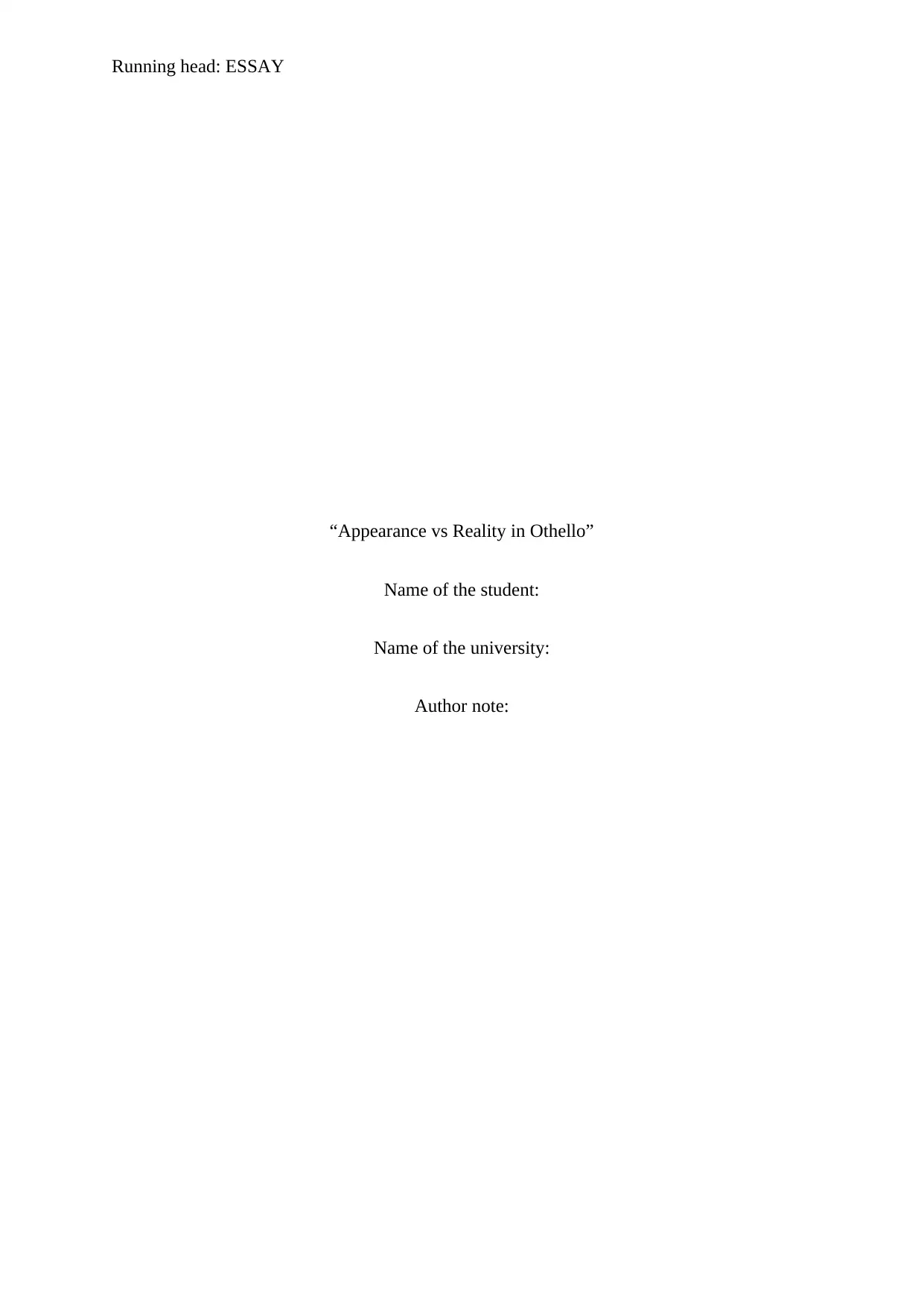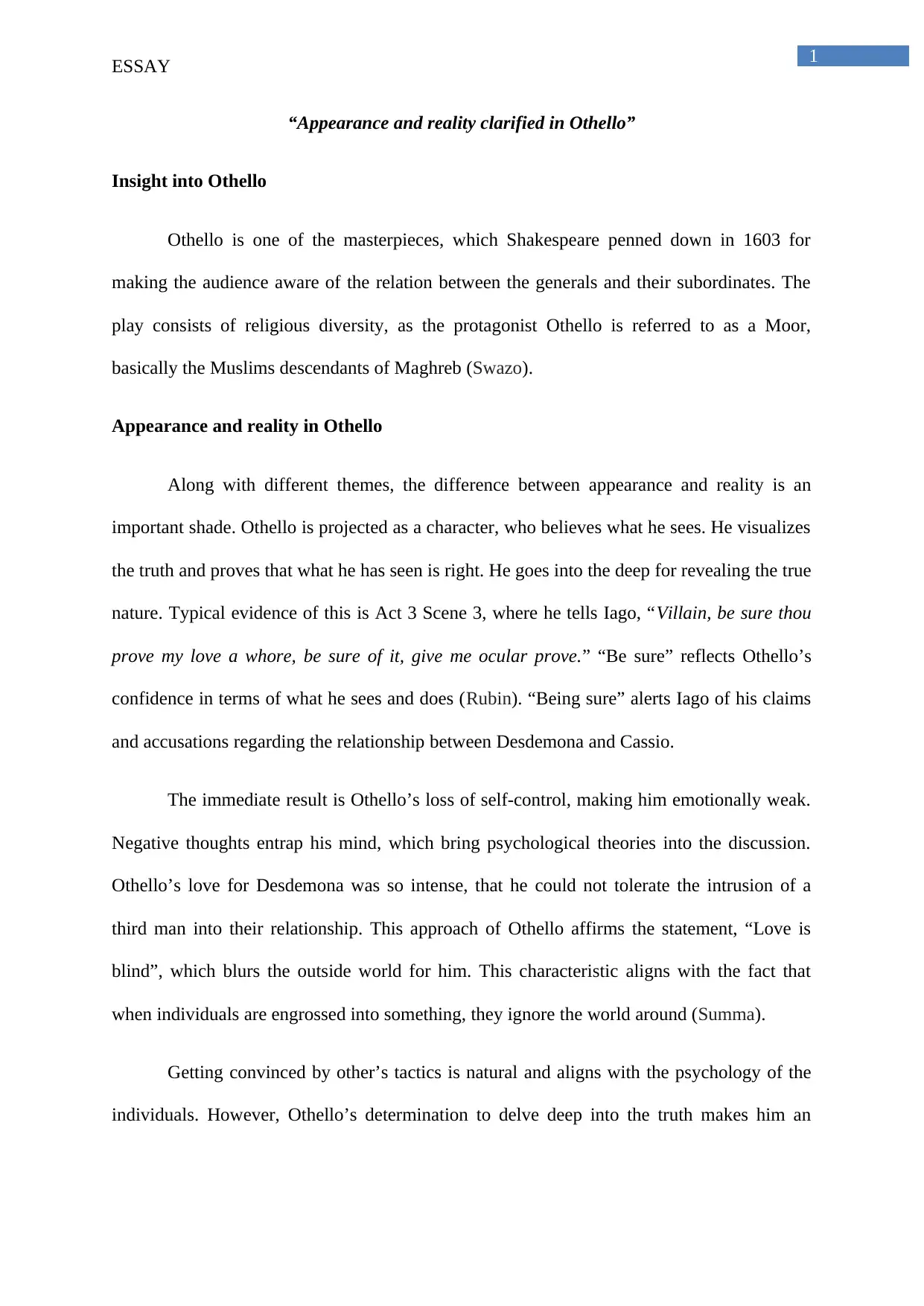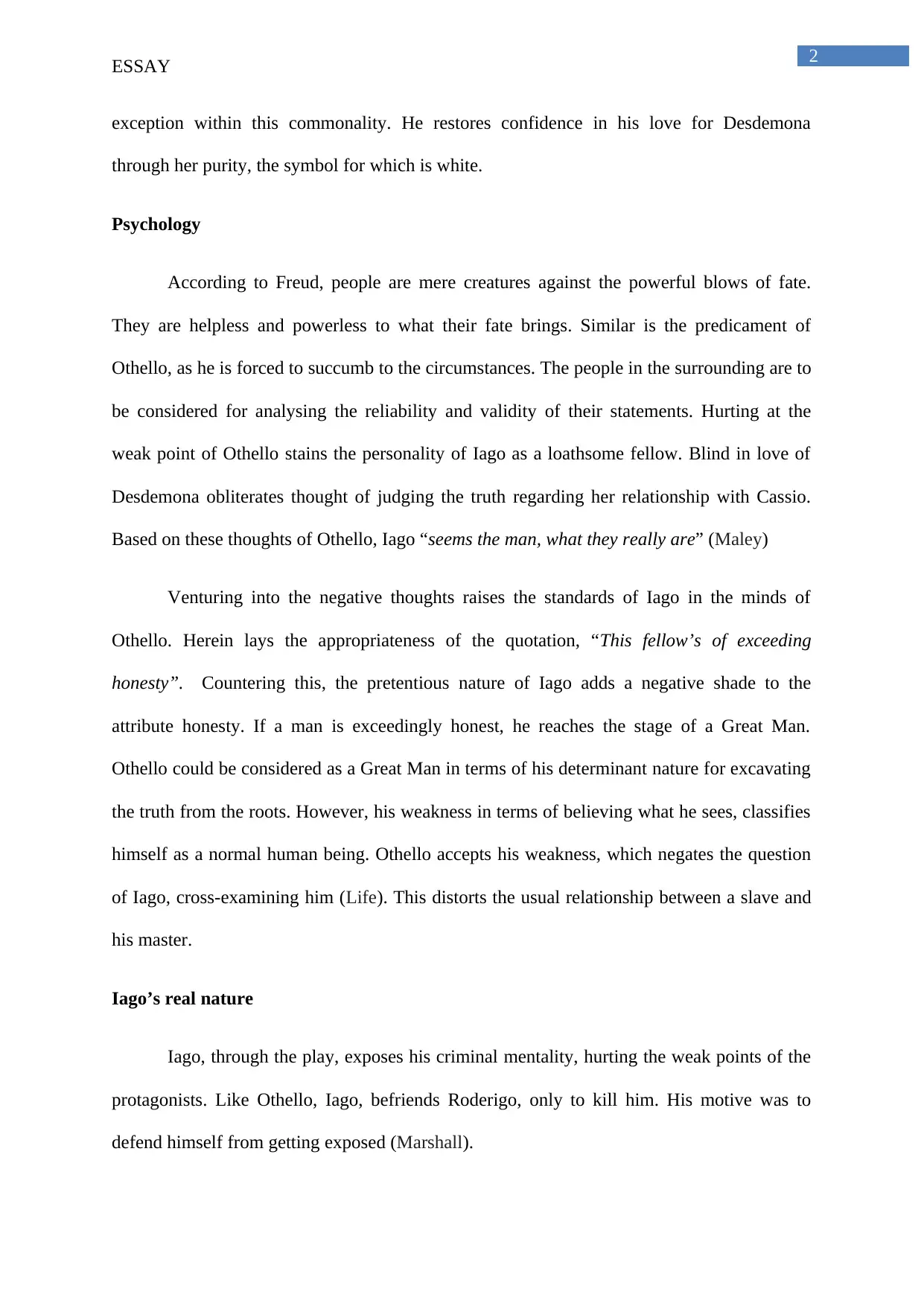A Deep Dive into Appearance vs. Reality in Shakespeare's Othello
VerifiedAdded on 2021/05/31
|5
|1088
|912
Essay
AI Summary
This essay delves into the complex interplay of appearance and reality within Shakespeare's Othello, examining how characters perceive and are deceived by outward appearances. The analysis focuses on the protagonist, Othello, and his susceptibility to manipulation, particularly by the antagonist, Iago. The essay highlights key scenes and quotes to illustrate how Othello's belief in what he sees leads to his tragic downfall. It explores the psychological aspects of the characters, referencing Freudian concepts and the impact of societal perceptions. Furthermore, the essay discusses the themes of honesty, trust, and the destructive nature of jealousy, ultimately revealing the play's exploration of human nature, manipulation, and the consequences of mistaking appearance for reality. The essay also provides references to support the arguments and provide further reading. The essay showcases the importance of critical thinking when analyzing literature.
1 out of 5







![[object Object]](/_next/static/media/star-bottom.7253800d.svg)